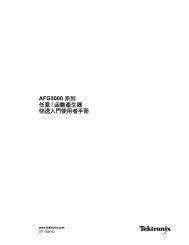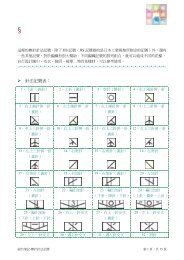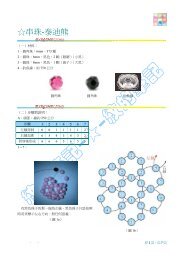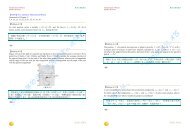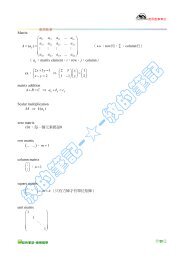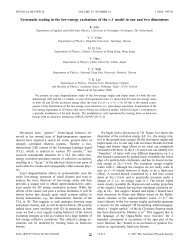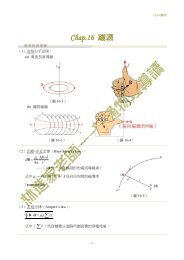Chapter 22 Materials Selection and Design Considerations
Chapter 22 Materials Selection and Design Considerations
Chapter 22 Materials Selection and Design Considerations
You also want an ePaper? Increase the reach of your titles
YUMPU automatically turns print PDFs into web optimized ePapers that Google loves.
W100 • <strong>Chapter</strong> <strong>22</strong> / <strong>Materials</strong> <strong>Selection</strong> <strong>and</strong> <strong>Design</strong> <strong>Considerations</strong><br />
Stress (10 3 psi)<br />
100<br />
80<br />
60<br />
40<br />
20<br />
0<br />
� max = 92,200 psi<br />
� aa = 25,600 psi<br />
� min = 41,000 psi<br />
Time<br />
� m = 66,600 psi<br />
Figure <strong>22</strong>.10 Shear stress<br />
versus time for an automobile<br />
valve spring.<br />
Now let us determine the actual stress amplitude for the valve spring using<br />
Equation 8.16 modified to the shear stress condition:<br />
taa �<br />
92,200 psi � 41,000 psi<br />
� � 25,600 psi 1177 MPa2<br />
2<br />
tmax � tmin 2<br />
(<strong>22</strong>.23)<br />
Thus, the actual stress amplitude is slightly greater than the fatigue limit, which<br />
means that this spring design is marginal.<br />
The fatigue limit of this alloy may be increased to greater than 25,300 psi<br />
(175 MPa) by shot peening, a procedure described in Section 8.10. Shot peening<br />
involves the introduction of residual compressive surface stresses by plastically<br />
deforming outer surface regions; small <strong>and</strong> very hard particles are projected onto<br />
the surface at high velocities. This is an automated procedure commonly used<br />
to improve the fatigue resistance of valve springs; in fact, the spring shown in<br />
Figure <strong>22</strong>.7 has been shot peened, which accounts for its rough surface texture.<br />
Shot peening has been observed to increase the fatigue limit of steel alloys in<br />
excess of 50% <strong>and</strong>, in addition, to reduce significantly the degree of scatter of<br />
fatigue data.<br />
This spring design, including shot peening, may be satisfactory; however, its adequacy<br />
should be verified by experimental testing.The testing procedure is relatively<br />
complicated <strong>and</strong>, consequently, will not be discussed in detail. In essence, it involves<br />
performing a relatively large number of fatigue tests (on the order of 1000) on this<br />
shot-peened ASTM 232 steel, in shear, using a mean stress of 66,600 psi (460 MPa)<br />
<strong>and</strong> a stress amplitude of 25,600 psi (177 MPa), <strong>and</strong> for 10 cycles. On the basis of<br />
6<br />
the number of failures, an estimate of the survival probability can be made. For the<br />
sake of argument, let us assume that this probability turns out to be 0.99999; this<br />
means that one spring in 100,000 produced will fail.<br />
Suppose that you are employed by one of the large automobile companies that<br />
manufactures on the order of 1 million cars per year, <strong>and</strong> that the engine powering<br />
each automobile is a six-cylinder one. Since for each cylinder there are two valves,<br />
<strong>and</strong> thus two valve springs, a total of 12 million springs would be produced every<br />
year. For the above survival probability rate, the total number of spring failures<br />
would be approximately 120, which also corresponds to 120 engine failures. As a<br />
t aa



